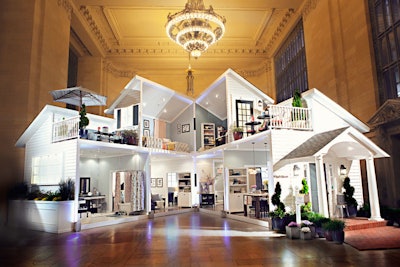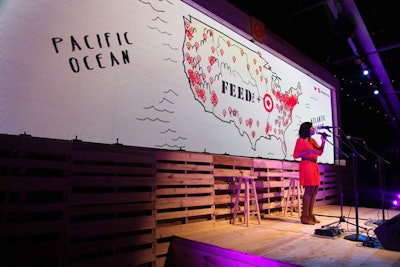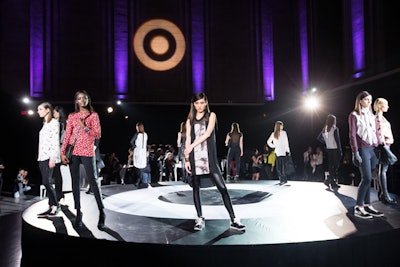One of the most visible retailers in marketing, Target has cemented its place among the most innovative brands in events, regularly crafting unique activations and hosting buzzy launches. But at the end of last year, the Minneapolis-based corporation’s public image took some hits: in December, news broke that a data breach exposed the credit and debit card information of as many as 40 million customers. (The hack is now estimated to have affected as many as 70 million shoppers.) The costs of addressing the security issue impacted its 2013 financial results—as did the company’s expansion into Canada—and in early May, C.E.O. Gregg Steinhafel resigned. Nonetheless, first-quarter revenue beat forecasts, with sales stabilizing and its Canadian operations showing signs of improvement.
In terms of event programming, the setbacks haven’t stopped the brand from continuing its mix of smart, engaging promotions that tap into the worlds of fashion, sports, film, and charitable giving. “[Addressing the breach] was more of a corporate opportunity for our legal team and our technology team,” says vice president of experiential marketing and alliances Dan Griffis. “It has no impact on our business.” And Griffis and his team have plenty of work to do. Selling everything from groceries to beauty goods and electronics, Target “has so many stories to tell,” Griffis says. “Events are a channel we fundamentally believe in.”
The evidence is certainly there. In 2013, the discount retailer hosted about 270 large-scale functions in the United States. Among the inventive promotions last year were events surrounding Fashion Week in New York—including an indoor carnival to launch Prabal Gurung’s collection in February and a bash that had a 120-foot-long interactive wall that introduced its collaboration with Phillip Lim in September. In August, there was a block party with family-friendly activities ahead of the premiere for Disney’s Planes in Los Angeles. And following January’s ING Miami Marathon that publicized Target’s C9 by Champion line, a post-race lounge offered spa treatments, branded giveaways, and a wall of 12,000 inspirational pins. For Christmas there was the Best Snowday Ever, which invited kids and families to sled down a 40-foot-high snow hill at L.A. Live; it lured 200,000 visitors. “As a team, we live by a very simple code,” Griffis says. “If it isn’t remarkable, it’s invisible.”
Marrianne Wilson, marketing manager of events for Target Canada, oversees the brand’s efforts in the new market and says that her team always strives to “surprise and delight” consumers. That includes partnering with Toronto’s World MasterCard Fashion Week to host a holiday-theme show and a lounge inside the tents, displaying its fashion items as well as home decor pieces to event attendees. The brand has also held events to preview new collections and fashioned a pop-up patio in April to show off outdoor furniture and offer visitors performances and snacks.
One ambitious undertaking for the corporation in 2013 was the creation a 1,520-square-foot house in New York’s Grand Central Terminal. The dollhouse-like structure showcased goods from Target’s Threshold home collection, and the installation was later dismantled and given to Habitat for Humanity.
Just as indicative of its innovation in promoting corporate responsibility through experiential efforts was Target’s partnership with Feed Projects to create a collection, the proceeds from which benefited nonprofit Feeding America and helped feed needy families and individuals. The June 2013 launch event encouraged guests to spread the word of the initiative via social media, tracking live tweets—and their impressions—on an animated video wall.
Social media impressions aren’t the only measurement tool the brand looks to when tracking an event’s success—planners also study gift card and coupon redemption, surveys, and more. “I’m a big believer that what you measure, improves, and what you don’t, degrades,” Griffis says.






















